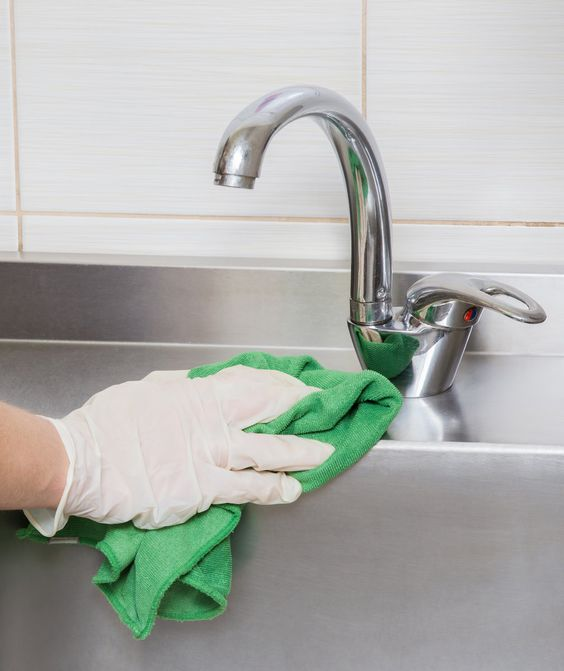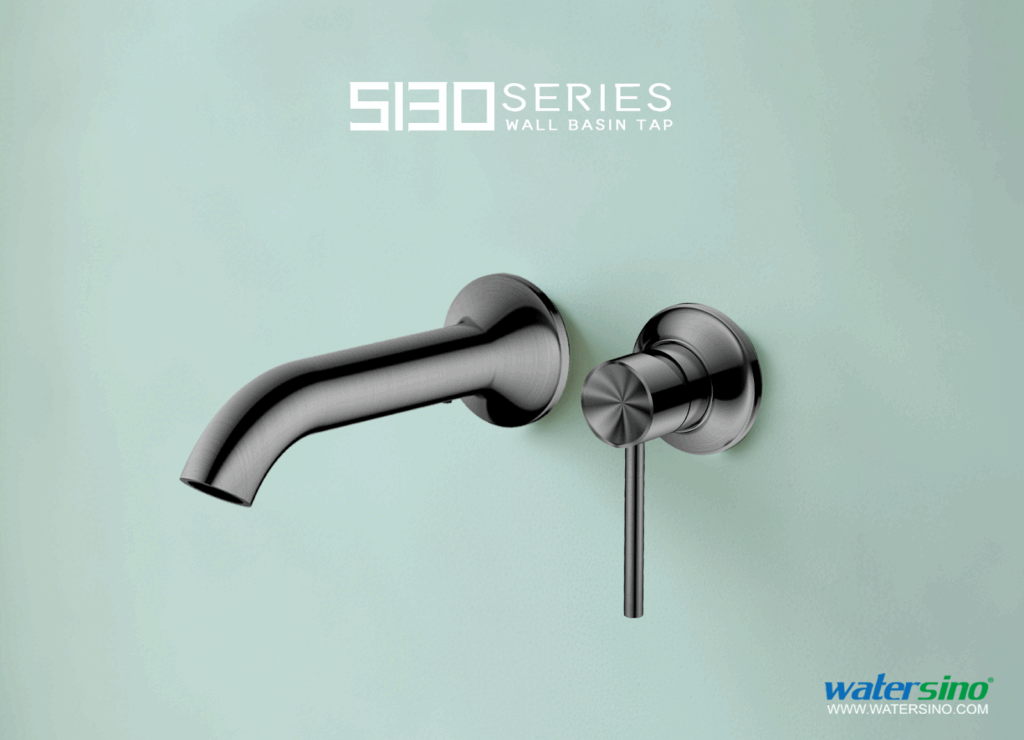Lorsqu'il s'agit du cœur de votre maison, choisir le bon robinet de cuisine Il est primordial de garantir à la fois fonctionnalité et esthétique. Notre guide d'achat complet vous guide pas à pas, vous permettant de faire un choix éclairé pour votre robinet de cuisine.
Dans ce guide, nous aborderons tous les aspects, de l'importance de la fonctionnalité et de la durabilité aux différents types de robinets de cuisine disponibles sur le marché. Que vous cherchiez des conseils pratiques pour l'achat de robinets de cuisine ou un guide d'achat complet, nous avons ce qu'il vous faut.
Qu’est-ce qu’un bon robinet de cuisine ?

Pour choisir un bon robinet de cuisine, plusieurs facteurs clés sont à prendre en compte. Un robinet de cuisine haut de gamme allie harmonieusement fonctionnalité, durabilité, esthétique et style pour améliorer l'expérience culinaire.
Fonctionnalité et durabilité
- Importance de la fonctionnalité : Un bon robinet de cuisine doit offrir une fonctionnalité transparente, offrant un accès facile et pratique à l'eau pour diverses tâches telles que laver la vaisselle, remplir des casseroles et rincer les produits.
- Facteurs pour une performance durable : Recherchez des caractéristiques telles que des valves à disque en céramique et une construction en laiton massif, qui contribuent à la durabilité et à la longévité du robinet. De plus, des fonctionnalités comme l'activation sans contact ou capteurs de mouvement peut ajouter de la commodité tout en réduisant l'usure du robinet.
Esthétique et style
- Esthétique: Au-delà de sa fonctionnalité, un bon robinet de cuisine doit s'harmoniser avec l'esthétique générale de votre cuisine. Que votre cuisine soit de style moderne, traditionnel ou industriel, le robinet doit s'intégrer harmonieusement au décor.
- Assorti au décor de la cuisine : Choisissez des finitions qui s'harmonisent avec les couleurs et le style de votre cuisine. De l'acier inoxydable classique au noir mat élégant en passant par le nickel brossé raffiné, choisissez une finition qui s'harmonise avec votre décor actuel.
En considérant attentivement ces aspects, vous pouvez vous assurer que le robinet de cuisine que vous avez choisi répond non seulement à vos besoins pratiques, mais améliore également l’attrait visuel de votre espace culinaire.
Comment choisir un robinet de cuisine (facteurs à prendre en compte)

Type et style de robinet
Pour choisir le meilleur robinet de cuisine, il est essentiel de comprendre les différents types et styles. Voici quelques facteurs à prendre en compte pour déterminer le type et le style de robinet qui répondront le mieux à vos besoins :
- Exigences fonctionnelles : Réfléchissez à la façon dont vous utilisez habituellement votre robinet de cuisine. Avez-vous besoin d'une douchette pour faire la vaisselle, ou un simple bec pivotant suffit-il ? Comprendre vos besoins spécifiques vous aidera à choisir le type de robinet qui vous conviendra le mieux.
- Assorti à l'évier et au comptoir de cuisine : Tenez compte de la conception de votre évier et de votre plan de travail. Si vous avez une grande cuisine, évier à double vasqueUn robinet à grand arc avec douchette extractible pourrait être plus pratique. Pour un évier plus petit, un robinet compact à poignée unique pourrait être plus adapté.
- Cohésion de style : Le style du robinet doit s'harmoniser avec l'esthétique générale de votre cuisine. Que votre cuisine soit contemporaine, traditionnelle ou transitionnelle, des robinets de styles variés s'intègrent harmonieusement à votre espace.
La prise en compte de ces facteurs vous guidera dans le choix du type et du style de robinet de cuisine appropriés qui non seulement répondent à vos besoins fonctionnels, mais améliorent également l’attrait visuel de votre cuisine.
Taille et compatibilité
Pour déterminer la taille de robinet adaptée à votre évier, il ne suffit pas de mesurer les dimensions. Voici quelques points à retenir :
- Proportions de l'évier : Tenez compte de la taille de votre évier lors du choix d'un robinet. Un grand robinet peut encombrer un petit évier, tandis qu'un robinet trop petit peut ne pas offrir suffisamment d'espace pour les grands éviers.
- Dégagement du comptoir : Assurez-vous qu'il y a suffisamment d'espace entre l'arrière du robinet et tout obstacle, tel que des murs ou des armoires. Cet espace est essentiel pour un fonctionnement et un entretien sans entrave.
- Compatibilité avec les luminaires existants : Si vous ne remplacez pas l’ensemble de l’évier, assurez-vous que le nouveau robinet est compatible avec tous les accessoires existants tels que les distributeurs de savon ou les systèmes de filtration.
En considérant attentivement ces facteurs de taille et de compatibilité, vous pouvez vous assurer que le robinet de cuisine choisi s'intègre parfaitement à votre configuration existante tout en répondant à toutes les exigences fonctionnelles.
Différents types de robinets de cuisine

source de Pinterest
Robinets à poignée unique et à double poignée
Lorsque vous explorez les différents styles de robinets de cuisine disponibles, il est essentiel de prendre en compte les caractéristiques et les avantages des robinets à poignée unique et à double poignée.
Robinets à poignée unique :
Les robinets à poignée unique sont réputés pour leur design élégant et moderne. Ils offrent un confort optimal grâce à un contrôle facile de la température et du débit d'une seule main. La simplicité d'un seul levier en fait également un choix idéal pour les petits éviers ou les bars où l'espace est limité.
Robinets à double poignée :
Les robinets à deux poignées, quant à eux, disposent de poignées séparées pour le contrôle de l'eau chaude et de l'eau froide. Ce design classique offre un réglage précis de la température et un style intemporel qui s'intègre parfaitement à l'esthétique traditionnelle des cuisines.
Lorsque vous choisissez entre ces deux options, tenez compte de vos préférences personnelles, de la décoration existante de votre cuisine et des exigences fonctionnelles spécifiques pour déterminer quel style correspond le mieux à vos besoins.
Robinets à tirette et à tirette
Il existe deux variétés populaires de robinets de cuisine : robinets à tirette et à tirette, chacun offrant des avantages uniques.
Robinets à tirette :
Ces robinets sont dotés d'une douchette extractible directement dans l'évier. Cette conception offre une flexibilité accrue pour remplir de grandes casseroles ou laver des objets volumineux. Les robinets extractibles sont souvent appréciés pour leur aspect professionnel et leur facilité d'utilisation.
Robinets extractibles :
Les robinets extractibles sont dotés d'une douchette plus compacte qui s'ouvre vers vous. Ce design est pratique pour la cuisine multitâche, permettant de diriger le jet d'eau précisément là où vous en avez besoin. Les robinets extractibles sont particulièrement adaptés aux cuisines avec des éviers plus petits ou un espace limité autour de l'évier.
Tenez compte de vos tâches de cuisine spécifiques et de l’espace disponible lorsque vous choisissez entre les styles de robinets rétractables et extractibles pour garantir une fonctionnalité optimale dans votre routine quotidienne.
Robinets de cuisine avec douchette latérale
Les robinets de cuisine équipés de pulvérisateurs latéraux offrent une commodité et une polyvalence supplémentaires dans l'espace cuisine.
Les douchettes latérales offrent une puissance de nettoyage ciblée pour les recoins difficiles d'accès de l'évier ou pour des objets spécifiques à laver. Elles peuvent également être utilisées indépendamment du robinet principal, ce qui les rend utiles pour diverses tâches en cuisine, comme remplir des casseroles hors de l'évier.
Lors de la sélection d'un robinet avec un pulvérisateur latéral, tenez compte de facteurs tels que la portée, la flexibilité du tuyau et la conception ergonomique pour garantir une intégration transparente dans vos routines quotidiennes de cuisine et de nettoyage.
Les robinets de cuisine sont-ils universels ?

source de Pinterest
Comprendre l'universalité
En matière de robinets de cuisine, le concept d'universalité fait référence à la capacité d'un robinet à s'adapter à une grande variété de configurations d'évier. Si certains robinets de cuisine sont conçus pour une compatibilité universelle, tous les robinets ne sont pas universellement adaptables à chaque évier ou plan de travail.
Des facteurs tels que le nombre de trous de fixation dans l'évier, leur espacement et la disposition générale de l'espace évier peuvent influencer la compatibilité d'un robinet avec une installation spécifique. De plus, la présence d'éléments supplémentaires, comme un distributeur de savon ou un pulvérisateur intégré, peut également influencer l'universalité.
Considérations de compatibilité
Lorsque vous déterminez la compatibilité des robinets de cuisine avec votre configuration spécifique, tenez compte des facteurs suivants :
- Configuration de l'évier : Notez le nombre de trous de fixation de votre évier. Les éviers standards comportent généralement de un à quatre trous pré-percés pour l'installation du robinet. Assurez-vous que le robinet choisi correspond à la configuration des trous de fixation disponibles.
- Espacement des trous de montage : Mesurez et vérifiez la distance entre les trous de fixation de votre évier. Cette mesure est essentielle pour choisir un robinet qui s'aligne avec l'espacement des trous de votre évier.
- Fonctionnalités supplémentaires : Si votre configuration existante comprend des accessoires tels que des distributeurs de savon ou des pulvérisateurs latéraux, assurez-vous qu'il y a suffisamment d'espace et de compatibilité pour intégrer ces éléments à votre nouveau robinet.
En évaluant soigneusement ces considérations de compatibilité, vous pouvez prendre une décision éclairée lors de la sélection d’un robinet de cuisine qui s’intègre parfaitement à votre configuration spécifique d’évier et de comptoir tout en répondant à vos exigences fonctionnelles.
Comment mesurer un robinet de cuisine ?
Pour choisir le bon robinet de cuisine, il est essentiel de mesurer précisément votre évier et votre plan de travail afin de garantir un ajustement parfait. Mesurer votre évier et votre plan de travail est essentiel pour déterminer la taille de robinet idéale, parfaitement adaptée à votre installation. Un robinet mal ajusté peut entraîner des désagréments fonctionnels et des différences esthétiques, d'où l'importance de prendre des mesures précises.
Guide étape par étape
- Dimensions de l'évier : Commencez par mesurer la largeur et la profondeur de votre évier. Ces dimensions vous aideront à déterminer l'espace libre maximal requis pour le bec et les poignées du robinet.
- Espace de comptoir : Mesurez la distance entre le bord arrière de l'évier et tout obstacle, tel que murs ou placards. Cette mesure garantit un espace suffisant pour l'installation et l'utilisation du nouveau robinet.
- Trous de montage : Si votre évier possède des trous de montage pré-percés, mesurez l'espacement entre ces trous pour assurer la compatibilité avec la configuration du nouveau robinet.
- Fonctionnalités supplémentaires : Si vous prévoyez d’intégrer des accessoires tels que des distributeurs de savon ou des douchettes latérales, mesurez l’espace disponible autour de l’évier pour accueillir ces éléments à côté du nouveau robinet.
En suivant ce guide étape par étape, vous pouvez obtenir des mesures précises qui vous guideront dans la sélection d'un robinet de cuisine qui s'intègre parfaitement à votre évier et à votre plan de travail existants.
Considérations supplémentaires
En plus des mesures de base, voici quelques autres facteurs à prendre en compte lors de la mesure d'un robinet de cuisine :
- Hauteur du bec : Vérifiez tout obstacle au-dessus ou autour de l'évier qui pourrait affecter la hauteur du bec du robinet. Assurez-vous qu'il y a suffisamment d'espace au-dessus de l'évier pour un fonctionnement sans entrave.
- Dégagement de la poignée : Tenez compte de tous les obstacles tels que les dosserets ou les rebords de fenêtre qui pourraient gêner le mouvement de la poignée une fois le nouveau robinet installé.
- Portée de l'aérateur : Mesurez à quelle distance du centre du bec vous aurez besoin du débit d'eau, surtout si vous avez un évier de grande taille ou à plusieurs bassins.
Conseils pour assurer un ajustement précis
- Utilisez un ruban à mesurer flexible pour des dimensions précises.
- Vérifiez toutes les mesures avant de procéder à l’achat d’un nouveau robinet de cuisine.
- Envisagez de demander l’aide d’un professionnel si vous n’êtes pas sûr des exigences de mesure.
- Gardez à l’esprit tous les projets de rénovation futurs lorsque vous déterminez les besoins de dimensionnement afin d’éviter d’éventuels conflits ultérieurs.
Installation et entretien de votre robinet de cuisine

source de Pinterest
Processus d'installation
L'installation et l'entretien de votre robinet de cuisine sont simples et peuvent être réalisés avec les bons outils et une approche méthodique. Voici un guide étape par étape pour l'installation d'un robinet de cuisine, ainsi que les outils et matériaux courants nécessaires.
- Préparez l'espace de travail : Avant de commencer l'installation, dégagez l'espace autour de l'évier afin de dégager un espace de manœuvre suffisant. Assurez-vous également que l'arrivée d'eau de l'évier est coupée pour éviter toute fuite pendant l'installation.
- Rassemblez les outils et matériaux essentiels : Les outils et matériaux suivants sont généralement nécessaires pour installer un robinet de cuisine :
- Clé à molette
- Mastic de plombier ou mastic silicone
- Clé à lavabo
- Tournevis
- Serviette ou chiffon
- Retirez l'ancien robinet (le cas échéant) : Si vous remplacez un robinet existant, commencez par débrancher les conduites d'alimentation et retirer l'ancien robinet. Nettoyez tous les débris ou accumulations autour de l'évier avant de continuer.
- Assembler les nouveaux composants du robinet : Suivez attentivement les instructions du fabricant pour assembler tous les composants de votre nouveau robinet de cuisine. Cela comprend généralement la fixation des poignées, du bec et de tout autre accessoire, comme les douchettes latérales ou les distributeurs de savon.
- Fixez le robinet en place : Placez le nouveau robinet à son emplacement prévu sur le plan de travail de l'évier, en veillant à ce qu'il soit bien aligné avec les trous de montage pré-percés. À l'aide d'une clé à lavabo, serrez les écrous de fixation par le bas tout en maintenant le robinet en place par le haut.
- Raccorder les conduites d'alimentation en eau : Une fois bien en place, raccordez les conduites d'alimentation en eau chaude et froide à leurs vannes respectives à l'aide d'une clé à molette. Assurez-vous que tous les raccords sont bien serrés et exempts de fuites.
- Test de fuites : Ouvrez l'arrivée d'eau chaude et d'eau froide pour vérifier l'absence de fuites autour des raccords ou à la base du robinet. Réparez immédiatement toute fuite en resserrant les raccords si nécessaire.
- Rincer les conduites du robinet : Faites couler de l’eau dans les conduites d’eau chaude et d’eau froide pour éliminer les débris ou les poches d’air avant d’utiliser régulièrement votre nouveau robinet de cuisine.
En suivant ces étapes et en utilisant les outils appropriés, vous pourrez installer avec succès votre nouveau robinet de cuisine sans complications.
Conseils d'entretien
L'entretien et l'installation de votre robinet de cuisine vont de pair avec des pratiques d'entretien essentielles conçues pour prolonger sa durée de vie tout en assurant une fonctionnalité optimale dans votre espace cuisine.
- Nettoyage régulier : Gardez votre robinet de cuisine propre en l'essuyant régulièrement avec une solution savonneuse douce et un chiffon doux. Évitez les nettoyants abrasifs qui peuvent endommager les finitions à long terme.
- Inspecter les fuites : Vérifiez régulièrement les zones sous l’évier pour détecter tout signe de fuite ou d’accumulation d’humidité autour des connexions de la conduite d’alimentation ou à la base du robinet lui-même.
- Nettoyer les écrans d'aérateur : Retirez et nettoyez régulièrement les grilles de l’aérateur pour éviter l’accumulation de minéraux qui peuvent affecter le débit de l’eau au fil du temps.
- Adressez-vous rapidement aux gouttes : Si vous remarquez des gouttes persistantes provenant de votre robinet, résolvez-le rapidement en remplaçant les rondelles ou les joints usés des poignées ou des cartouches, si nécessaire.
- Dépannage des problèmes courants : Familiarisez-vous avec le dépannage des problèmes courants tels qu'une faible pression d'eau, un contrôle de température erratique ou des bruits inhabituels pendant le fonctionnement.
Conclusion
En conclusion, le choix du robinet de cuisine idéal pour vos besoins peut être simplifié grâce aux informations fournies dans ce guide d'achat complet. En comprenant les facteurs essentiels à prendre en compte et en vous familiarisant avec les différents types de robinets de cuisine disponibles, vous pourrez aborder votre achat en toute confiance.



